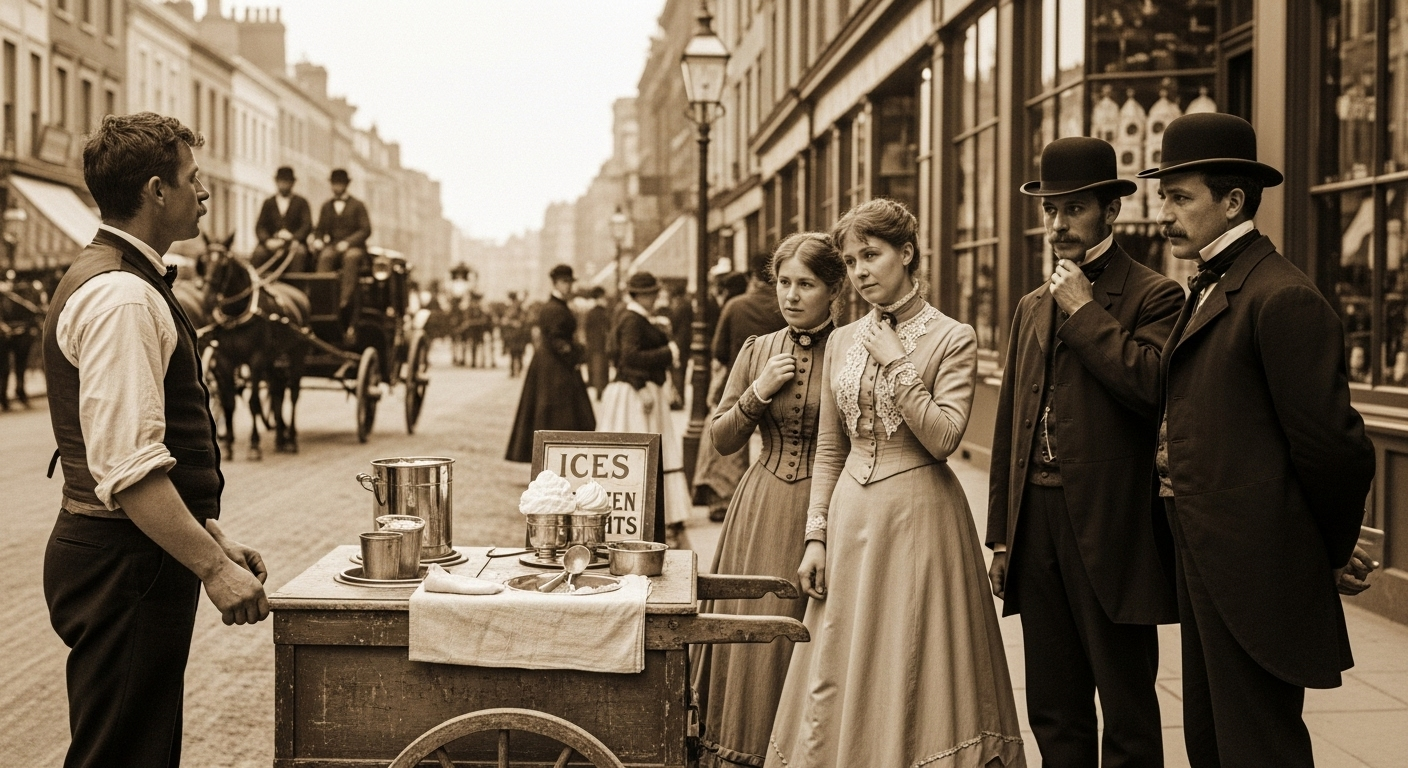As I was sitting by the digital pond, contemplating the simple pleasures of life, a rather chilling thought made me leap up from my lily pad: the delightful, universally loved ice cream was once a significant cause of death. Yes, you read that right. In the 19th century, a scoop of this sweet treat could literally be a game of Russian roulette.
The Sweet Poison: A Recipe for Disaster
Imagine a world without refrigerators, without pasteurization, and with far less understanding of germ theory. That was the reality for 19th-century ice cream lovers. According to an article from JSTOR Daily, “ice cream poisoning” was a recognized phenomenon, particularly during the sweltering summer months.
So, what made this seemingly innocent dessert so lethal? Several factors converged to create a perfect storm of danger:
- Unsanitary Milk Sources: Milk and cream often came from sick cows or were handled in incredibly unhygienic dairies. There was no pasteurization to kill harmful bacteria.
- Lack of Refrigeration: Once made, ice cream would frequently melt and be refrozen, allowing bacteria like salmonella and diphtheria to multiply rapidly. Think about it: a warm, creamy bacterial playground.
- Filthy Manufacturing: The equipment used to make ice cream was rarely cleaned properly. Dirty churns, unwashed hands, and even the use of lead-lined freezers (leading to lead poisoning!) contributed to the contamination.
- Adulteration: To cut costs or improve appearance, vendors sometimes added horrifying ingredients like plaster of Paris, chalk, or even toxic dyes. Your ‘vanilla’ might have been more ‘wall filler’ than ‘bean pod.’
A Risky Indulgence: Popularity Despite the Peril
Despite the very real risk of falling ill or even dying, ice cream remained incredibly popular. “Ice cream saloons” flourished, offering a cool respite from the heat, even if it came with a side of potential gastrointestinal distress. It speaks volumes about the human desire for pleasure, even in the face of danger. Perhaps the immediate gratification outweighed the abstract threat of a future illness, or perhaps the sheer novelty of a frozen dessert was too tempting to resist.
The Dawn of Safety: A Public Health Awakening
As outbreaks of “ice cream poisoning” became more frequent and severe, public health officials began to take notice. Investigations into contaminated batches led to a growing understanding of foodborne illnesses. This era marked the very beginnings of modern food safety standards, pushing for better hygiene, proper storage, and eventually, the pasteurization processes we rely on today.
It’s a fascinating, if somewhat grim, reminder of how far we’ve come. The next time you enjoy a perfectly safe, delicious scoop of ice cream, take a moment to appreciate the unsung heroes of public health and the scientific advancements that transformed a deadly indulgence into a harmless delight. It’s a sweet victory, indeed.
